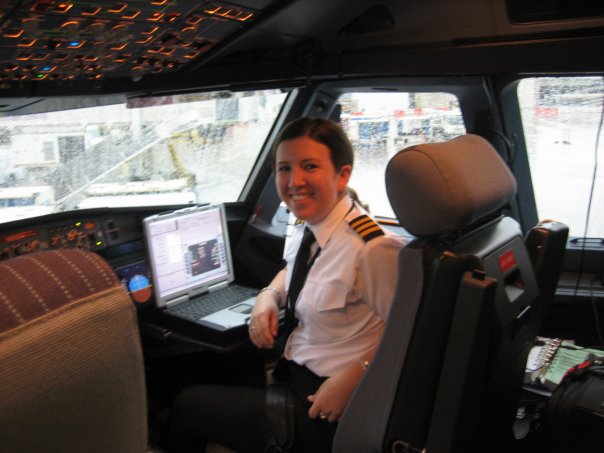As several instances of unreliable airspeed/primary airspeed failures have been released by the NTSB (read this article by Reuters: U.S. probes altitude, speed data on two Airbus A330s), I was reminded that unreliable airspeed is one of the "memory items" I was taught while getting my A320 type rating.
Memory items are checklists for emergency situations that you are required to memorize, as immediate action is required by the crew (i.e. you might be dead by the time you pull out a checklist). Now there are a lot of situations where pilots know how to act without needing a checklist (engine failures, stalls, etc.) but there are some where the response isn't instinctual, so a memory items checklist is needed. I've heard of some airlines that had more than 20, luckily on the A320 we had 3.
Here's the memory item for "unreliable airspeed indication."
MEMORY ITEMS - If safe conduct of flight is affected:
Note: respect all stall warnings if in ALTERNATE LAW
1. Adjust pitch/thrust:
- Below THR RED ALT -- 15 degrees/TOGA
- Above THR RED ALT and below 10,000' -- 10 degrees/CLB
- Above THR RED ALT and above 10,000' -- 5 degrees/CLB
2. AUTOPILOT................OFF
3. FLIGHT DIRECTOR..........OFF
4. AUTOTHRUST...............OFF
5. Flaps....................Maintain current CONFIG
6. Speedbrakes..............Check retracted
7. Gear.....................UP
When at or above MSA or circuit altitude, level off for troubleshooting.
Basically, these pitch attitudes and power settings are there to keep you from stalling and give you a decent climb rate. It seems Airbus believes most unreliable airspeed problems are expected to be on takeoff, as the dividing line on pitch attitudes and power settings are based on whether you've passed the thrust reduction altitude, which is usually around 1,000' above ground level, where the pilots reduce engine power from TOGA (takeoff/go around - maximum power) to CLB (climb power, which the engines can sustain for long periods, unlike TOGA power).
After this there is a checklist which deals with resetting the ADRs and has tables of the correct pitch attitude and power setting for climb, cruise, descent and landing at a range of different altitudes in case the ADRs do not come back online. From what I've gathered from the news articles, in both instances it seems the crews were able to reset the ADRs successfully.
As with most Airbus emergencies related to data failures, it's more likely than not that the computers can be restarted quickly and the flight can continue normally. This is, as I mentioned before on another post, not an easy airplane to fly when things go wrong. Combine an emergency such as unreliable airspeed with a situation that Airbus may not have considered, such as the suspected severe thunderstorm activity, and it may have been a recipe for disaster that enveloped Air France flight 447.
Subscribe to:
Post Comments (Atom)

No comments:
Post a Comment